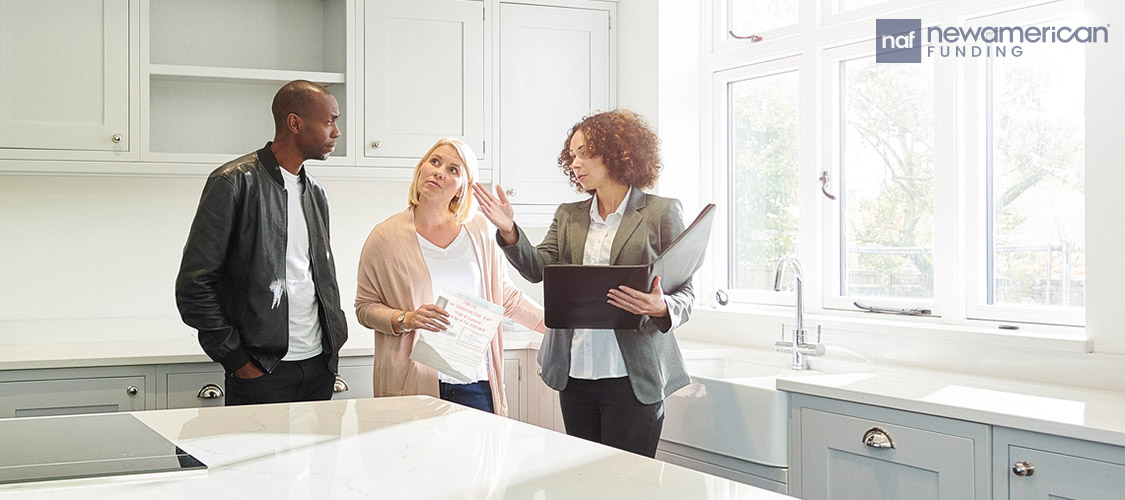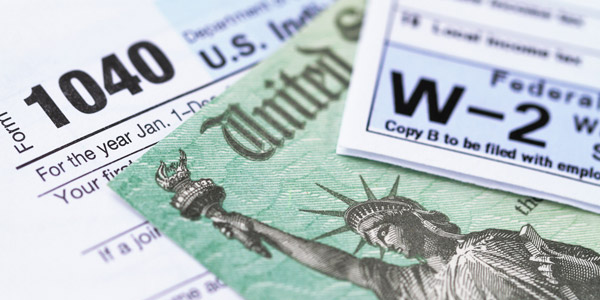Homebuyers
How to Get Pre-Approved for a Mortgage
May 31, 2024
Getting pre-approved is one of the first major building blocks for homeownership. In most cases, sellers will only take offers seriously if you have a pre-approved mortgage. That's why it's important to get the right information. This guide to how to get pre-approved for a mortgage covers the basics.
Understanding Mortgage Pre-Approval
A mortgage pre-approval is a written statement from a lender that specifies how much "home" a borrower can afford. Lenders determine pre-approval amounts by looking at an applicant's credit score, credit history, debt, income, and assets. While a pre-approval is not the same as a loan offer, it's considered reliable for determining a buyer's creditworthiness. If a purchase contract is created, the borrower will need to complete an official mortgage application. The benefits of pre-approval include:
- Knowing the size of the mortgage a lender would be willing to give you.
- Getting a real estate agent to show you homes.
- Having offers taken seriously by sellers.
Mortgage Pre-approval Vs. Pre-qualification
Mortgage pre-approval shouldn't be confused with mortgage pre-qualification when buying a home. While both can give borrowers an idea of their borrowing power, pre-approval is considered a more thorough, reliable option compared to mortgage pre-qualification. Pre-qualification is a quick process that simply indicates whether a borrower could qualify for a mortgage. It does not involve the extensive documentation and verification required for pre-approval. Additionally, buyers can't use pre-qualification as evidence of financing when making offers.
Benefits of a Mortgage Pre-approval
Every serious buyer who plans to use a mortgage must complete the pre-approval process. Pre-approval strengthens your position as a buyer because it lets sellers know that your creditworthiness has already been verified by a lender. It can also help you move forward with your official loan application quickly because your lender has already verified important information. That can be a big factor if you'd like to quickly lock in a rate after your offer has been accepted. Additionally, pre-approval's ability to potentially speed up final loan approval can lead to a faster closing.
Preparing Your Financial Profile
Your creditworthiness shouldn't be a mystery to you before you contact a lender for a pre-approved mortgage. Take time to assess your financial health. You should also get all of your documents to speed up the process. Commonly requested financial documents for pre-approval include:
- W-2 forms.
- Recent pay stubs.
- Tax returns going back two years.
- Bank statements.
Credit Score Requirements
Credit score weighs heavily in loan decisions. In addition to affecting your overall ability to be approved for a mortgage, your credit score can impact the type of mortgage you can be approved for by a lender. If your credit score needs some polishing, look over your credit history to spot any errors that could be holding it back.
File a complaint with the credit-reporting agency if you believe that something on your report is inaccurate. Other ways to spruce up your credit before applying for a mortgage include paying off debts, getting current with late payments, and asking for higher credit limits on credit cards to widen your debt-to-income ratio (DTI).
Evaluating Your Income and Employment Stability
Having a stable income and employment history is important in the pre-approval process. Generally, lenders will verify both employment and income going back two years. While variations in employment won't necessarily disqualify someone from getting a mortgage, the pre-qualification process can take longer if additional verification is needed. This is also true if a person is self-employed.

Choosing the Right Mortgage Lender
When researching how to get pre-approved for a mortgage, borrowers are sometimes surprised to learn that they have several different options. These options include banks, credit unions, and online lenders. Traditional banks generally offer a wider variety of loan products compared to other options. They also don't require the membership criteria of many credit unions. Online lenders generally model their loan offerings after traditional banks. However, they may offer fewer loan products. Borrowers opting for digital loans won't have options for in-person meetings when they have questions or concerns about their loans.
Understanding Different Mortgage Options
Where you get a mortgage isn't the only decision to make. Borrowers must also choose between loan products based on their financial goals, what they can qualify for, and other factors. Here's a glance at popular mortgage loans:
- Fixed-Rate Mortgage: Typically offered as a 15-year or 30-year loan, a fixed-rate mortgage gives the borrower the same interest rate for the life of the loan.
- Adjustable-Rate Mortgage (ARM): ARMs have variable rates that can either decrease or increase once the introductory period is over.
- FHA Mortgage: These are mortgages that are backed by the Federal Housing Administration. Requirements for FHA loans are generally less stringent compared to Conventional mortgages because the lender is protected by the FHA.
- VA Mortgage: For those who qualify, VA loans can make it possible to purchase a home with no down payment.
- USDA Mortgage: For buyers searching for homes in rural areas, USDA loans can make it possible to get into a home with no down payment.
When choosing the right mortgage, take time to identify your long-term financial goals, present-day financial situation, and how long you'd like to stay in a home.
The Application Process for Mortgage Pre-Approval
The first step is contacting a lender to inquire about pre-approval steps and requirements. While every financial institution has its pre-approved mortgage loan requirements, a lender will generally ask for documentation proving income, assets, work history, and credit score. Here's a blueprint for the average pre-approval process:
- Pre-approval should be started at the beginning of your buying journey.
- You can consider looking at your credit history, calculating your debt-to-income (DTI) ratio, and using loan estimate calculators to get an idea of the mortgage amount you'll see in your pre-approval letter.
- Get your documents ready before you meet with a lender. This will include a driver's license and Social Security number, tax returns going back two years, W-2 statements going back two years, several months of pay stubs, and recent bank statements.
- Receive your pre-approval letter to begin looking at homes to make an offer.
If you have a complicated income or an unusual work history, be prepared to answer questions or fill in gaps for your lender.
Dealing with Potential Issues in Pre-Approval
If you're struggling with a low credit score, high DTI ratio, or some other factor that can make pre-approval challenging, consider taking time to improve your financial fitness before applying. Some strategies for potentially improving borrowing power include:
- Working with a lender to select the right loan for your situation.
- Making a plan to pay down personal debt.
- Rethinking some living expenses.
- Boosting income.
- Increasing the size of your down payment.
- Asking credit cards to increase your credit limit to boost DTI.

After Receiving Your Mortgage Pre-Approval
How long does pre-approval last? Once you've been pre-approved for the mortgage, you'll have between 30 and 90 days to shop around for homes. The key is to avoid making any financial waves before you close on a home. Making a major purchase, changing jobs, accepting gift funds from relatives, or taking out any other kind of loan during the period between pre-approval and closing could prevent your pre-approval from turning into an actual loan approval.
Mistakes to Avoid During the Pre-Approval Process
The most common mistake a borrower can make during mortgage pre-approval is providing inaccurate or incomplete information. Trying to make yourself appear more creditworthy than you are will only cause delays. Other common mistakes include:
- Quitting your job.
- Co-signing on a loan to help someone else.
- Applying for new credit cards. Yes, this includes store credit cards!
- Moving money or assets around.
- Suddenly depositing large amounts of cash that you've been hiding.
- Make changes to your current address or name.
FAQs About Mortgage Pre-Approval
Why should I get pre-approved by more than one lender?
Seeking multiple pre-approvals can help you get a better idea of the different mortgage sizes and interest rates that are available to you.
How long does a mortgage pre-approval last?
Mortgage pre-approvals can last anywhere from 30 to 90 days.
Can pre-approval affect your credit score?
Getting a pre-approval generally won't impact your credit score because lenders use "soft inquiries" instead of "hard inquiries" when reviewing applications. However, the actual home loan approval process negatively impacts credit scores slightly because it includes hard inquiries.






 Smart Moves Start Here.
Smart Moves Start Here.